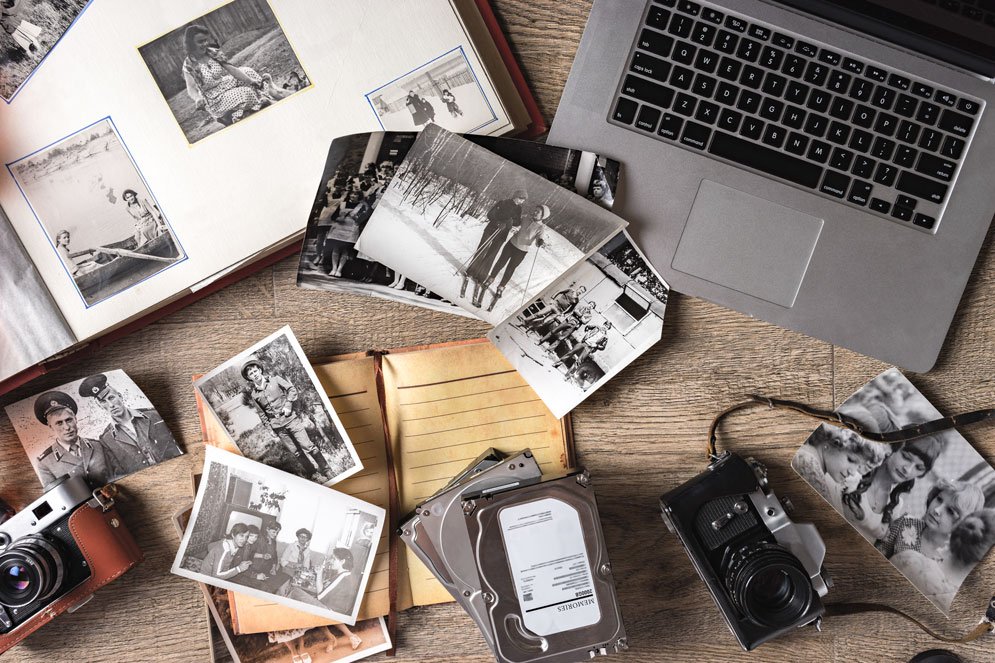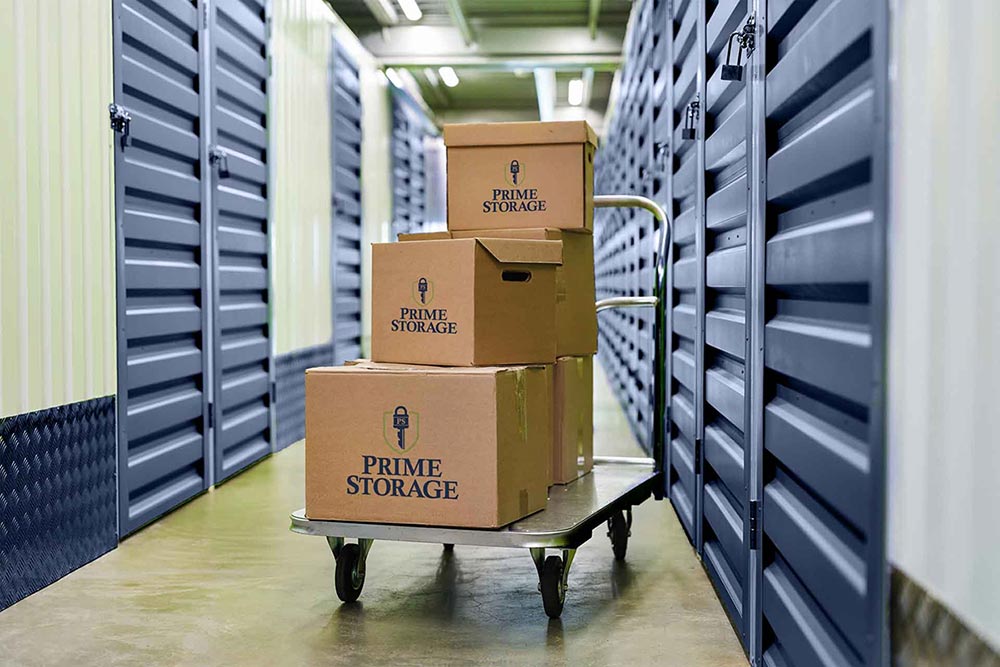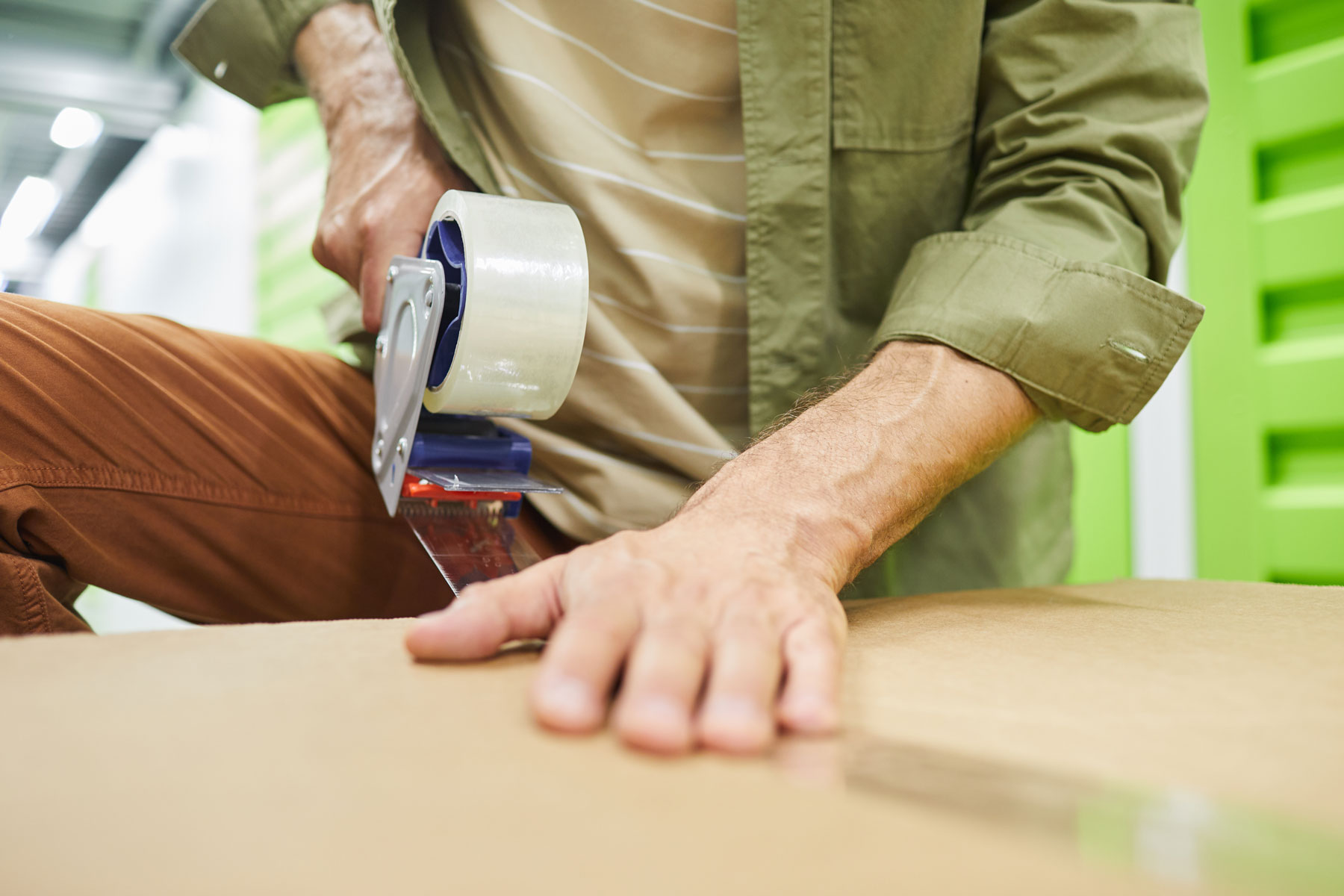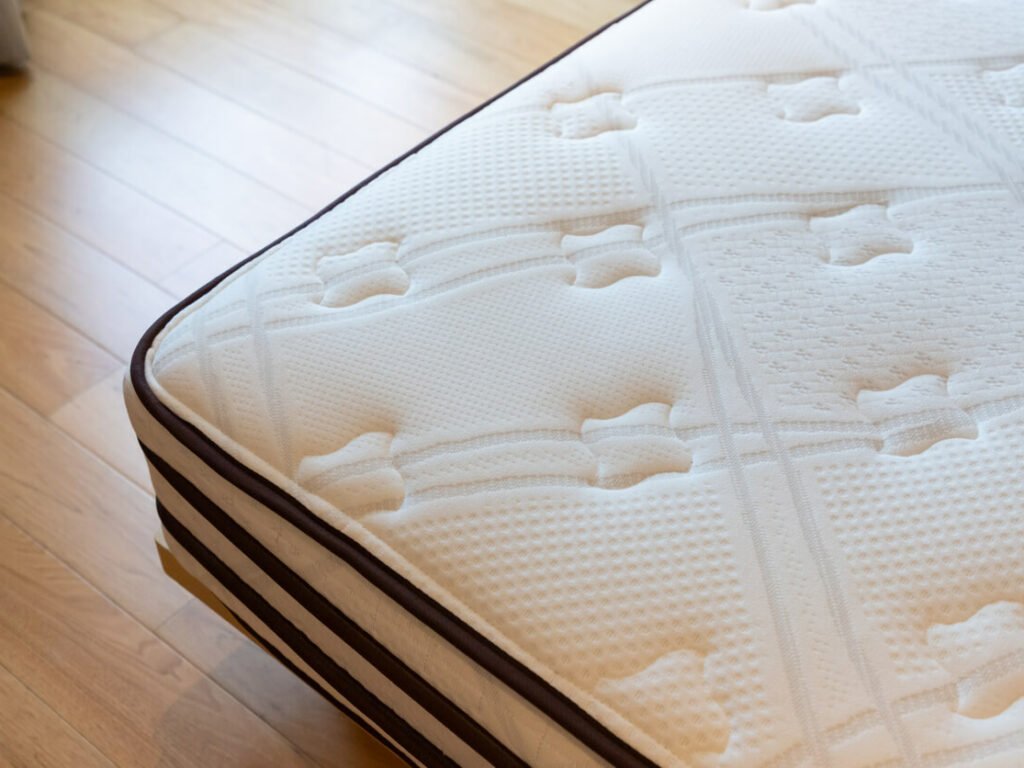Stable storage space makes all the difference in organizing and preserving your photos, and Prime offers just that. Read on for the dos and don’ts of proper photograph storage, so you can hang onto decades of sentimental memories and avoid damage without all the trial and error.
Don’ts of Photo Storage
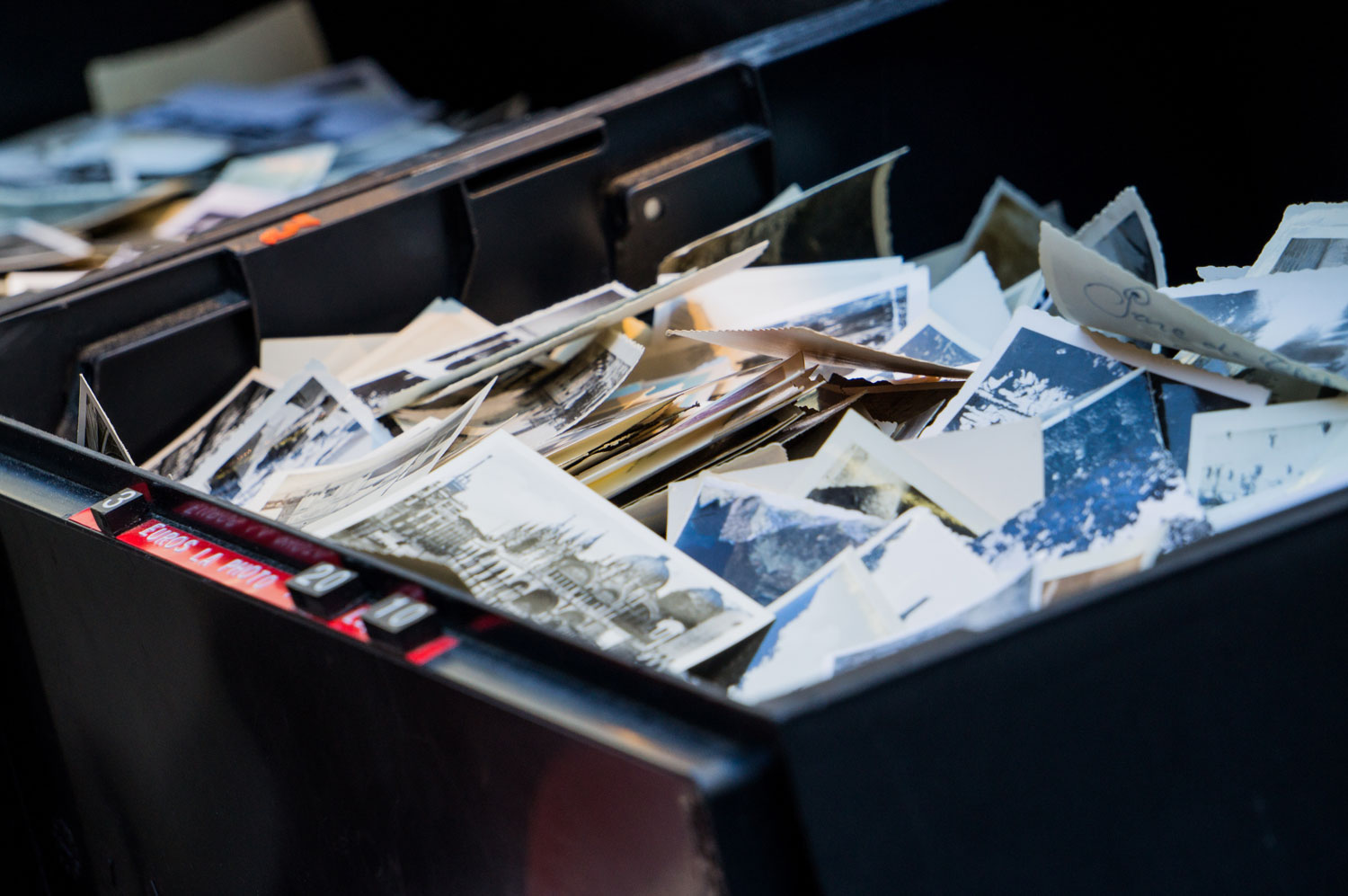
Expose Photos to Chemicals
It’s easy to forget how absorbent paper is. Not only can it absorb and be damaged by fumes from chemicals but also any moisture. So, a general rule of thumb is always to keep your photographs dry. This means keeping them away from any cleaners, fragrances, adhesives, etc., if you want them to last.
In addition, aim to arrange your photographs in an acid-free photo storage box or album. While this means the old storage ways of shoeboxes and cardboard boxes are not ideal, they should only be reserved as a last resort, low-budget option. Instead, your best bet is to use archival boxes or albums with acid-free plastic sleeves. Mylar sleeves are also a storage solution for negatives or organizing photos that have already begun to deteriorate.
Handle Old Photos Directly
If you are given or unearth a collection of old photos while cleaning house, it’s best not to touch them directly. It sounds extreme, but the oils from your skin can leave behind residue that can cause wear and tear over time. This is especially true if any photographs are already deteriorating. The older the photo, the more vulnerable it becomes. So, wear disposable gloves before sorting through and archiving older photos.
Another rule to follow is never to wear lotion on your hands when handling photographs. The residue from lotions can easily leave greasy smudges or marks. Water can also smudge the ink on photos or make it bleed. So, ensure your hands are completely clean and dry before handling any images.
Keep Photos in a Box with Other Things
This is a one-way ticket to getting your precious photos crumpled, scratched, or poked with holes. Careless storing leads to less-than-perfect quality. Given the delicacy of photographs, they should never be kept with other belongings.
Heavier items aside, you never know how another material might react with the paper, potentially ruining photos forever. For example, a pen in a box with photos could explode and stain the contents or adhere them together, making them impossible to recover. It would be best also to avoid overfilling or underfilling boxes of photos. Doing this can lead to damage as items shift or are pressed together. Dividers can be used to help with this issue and keep photographic collections upright or separated. In addition, ensuring you use the correct size box or album can make all the difference in preserving your photos for yourself or future generations.
Store Photos on the Ground
Storing photos anywhere on the ground, whether at home or in a storage unit, risks them coming into contact with moisture from potential flooding. This is also true if stored near any vents, piping, or plumbing that can leak or release condensation. Avoid warping your photos by keeping them off the ground, either on a shelf or on the upper floor of your home.
Storing photos on the ground can also offer an open invitation to certain pests. Though they can crawl into just about any crevice, mice and some insects might see a box on the ground as a cozy new den to nest in. The same can be said if your photos are stored near food items, so keep them separate.
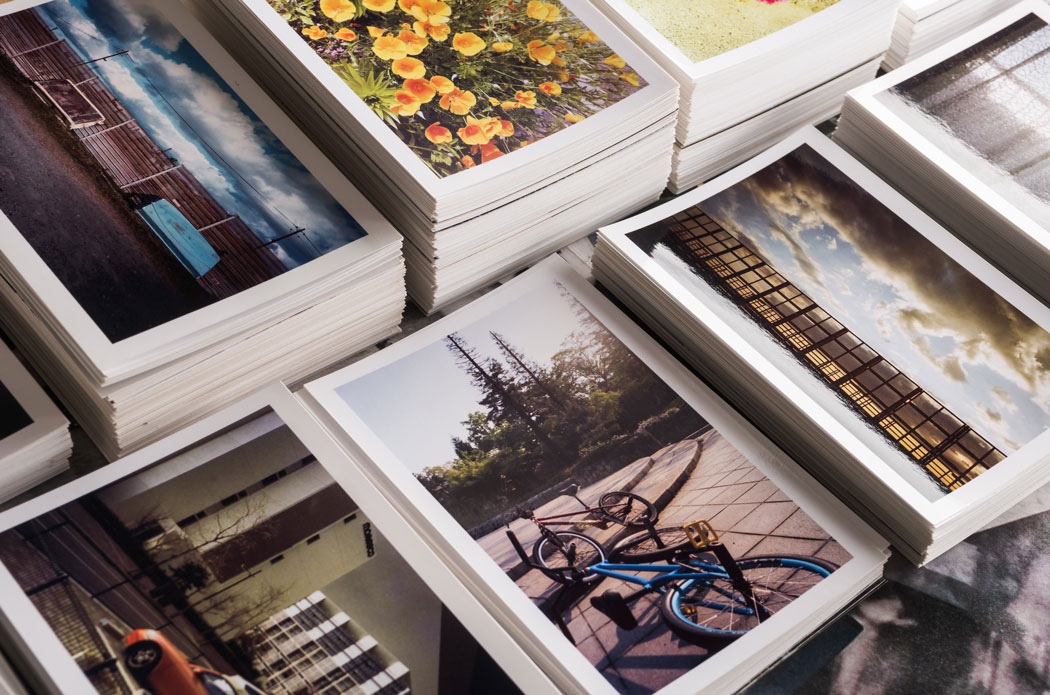
Dos of Photo Storage
Protect Photographs from Light
Like any other paper, photographs are susceptible to damage from light exposure. This applies to both natural light and artificial light sources. UV rays and additional light exposure not only discolor the paper but can also cause images to fade.
If you are displaying photos in frames, try to face them away from direct light sources or place them in dimmer areas of your home. You can also apply or purchase frames with UV glazing to help prevent exposure damage to your more sentimental photos. Museums often use this type of glass to protect artwork displays, which can be purchased online.
Make Copies of Photos
Making copies of any photos you want to display is a good idea. Photographs are easily damaged, and life is unpredictable. It’s better to have copies just in case than lose those memories forever. This may sound like just another thing you need to store. However, there are workarounds to avoid taking up more space in your home.
The best course of action is to keep a curated collection of physical and digital copies of all your photos. This is especially useful if you’re someone who keeps hundreds of them, as you can pick and choose the highest quality images or most sentimental memories to print. There’s no reason to hang onto physical copies of old food photos or blurred faces that no one will recognize but you. However, special events or locations are much more valuable and worth keeping.
Although nothing is failsafe, an external hard drive, USB stick, or online drive helps store digital copies of photos that can be moved or reprinted at any time. In addition, this is an easier way to share or pass down larger quantities of pictures at once.
Label Your Photos
Most people print or upload their photos, and that’s that. It is extra work to label who’s who or where and when a picture is taken, but that information becomes priceless later down the road. Getting into the habit of labeling your photos using a No. 2 pencil and an index card or an (acid-free) paper note gives them historical context. It also helps make them more valuable for generations to come.
With the rise in genealogy apps and data, labeled photos make it much easier for individuals looking to fill out their family trees. It’s preferable to start building your family history using known family documents than scouring the internet for unverifiable crumbs.
Place Photos in Climate Controlled Storage
The best way to store photographs is to keep them somewhere clean and where temperature and humidity are maintained. Since photos also can mold, crack, peel, or curl when exposed to moisture, humid areas like a garage, attic, or basement are not ideal. In addition, cooler temperatures are best as heat can speed up degradation.
A closet in an air-conditioned room at home or a climate controlled storage unit offers some of the best locations for storing photos. Prime has climate controlled storage options at select facilities across the county. These storage units are kept within a consistent temperature range year-round. This feature makes this type of storage great for photos and other temperature-sensitive belongings. Visit our website to find a facility near you and browse available units. Find the perfect unit size that fits your needs so that you can store your photo memories with peace of mind.
